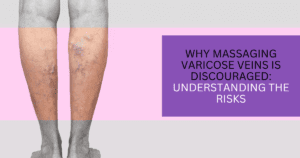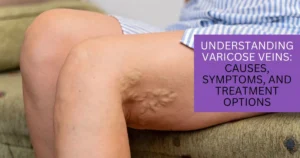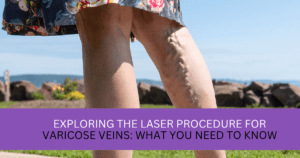The healthcare industry is evolving, and technology has a monumental role in this. Various cutting-edge diagnostic procedures are being used to improve precision and accuracy in medical treatment. One of the invaluable tools is a vein mapping ultrasound, which helps understand vein health and prevent serious vascular diseases, such as deep vein thrombosis (DVT), varicose veins, or venous insufficiency. As our veins play a substantial role in ensuring seamless blood flow throughout our bodies, vein health is crucial for minimizing risk factors and preventing venous complications. This article helps you explore this non-invasive technique, its procedure, implementation, and key benefits. Let’s shed some light on this advanced diagnostic method for valuable insight.
Understand Vein Mapping Ultrasound | A Snapshot
VMU is utilized to identify the superficial veins in your arms and legs. This method builds images of your veins. Afterwards, it allows the practitioner to measure blood flow through the valves while forming a proper vein map of the entire area. The list of venous problems this technique is possibly able to identify is given below:
- Irregular twisting
- Deep vein thrombosis (DVT)
- Enlarged veins
- Other abnormalities
If the patient wants to claim insurance, the role of insurance providers comes into play. They assess the vein mapping ultrasound readings to confirm if patients meet certain medical criteria. Without a thorough understanding, it is nearly impossible to expertly examine the veins and propose the best treatment option.
What is the Vein Mapping Ultrasound Process?
VMU is an advanced diagnostic technique. Patients should take an interest in knowing its process. Let’s explore a step-by-step overview of this procedure.
- The sound waves (Doppler) technology is employed to closely view and map the veins within the legs.
- Ultrasound tests deliver high-frequency sound waves through the body’s tissues.
- The ultrasound machine accurately records the sound echoes to convert them into videos or photos of body tissues.
- During vein mapping, these sound waves are transferred through a region of blood vessels in your body.
- These sound waves reflect off the blood vessels within your leg.
- The speed of the blood flow is well-mapped and displayed on the computer screen.
- This enables vein doctors to closely examine the size, depth, and blood flow in these veins to recommend a treatment plan.
- This process typically takes 30-60 minutes, and easily removable clothes are recommended.
- Once the process completes, patients can smoothly return to routine activities without facing any trouble.
Difference Between Venous Ultrasound and Vein Mapping
A venous ultrasound is an image-based test that utilizes sound waves to closely view the blood flow through your veins. It allows experts to see the blood flow through the vessels.
On the other side, vein mapping is a different method that utilizes an ultrasound probe to construct the images of your veins. It helps to map out the location, size, and direction of blood flow in veins. This particular process is used for planning bypass surgery or vein grafts.
Key Benefits of Venous Mapping Ultrasound
This technique comes with several key benefits, making it a great tool in modern vein care. To uncover the remaining benefits of this method, keep reading below.
Accurate Diagnosis
Vein mapping ultrasound provides a highly accurate diagnosis by sharing a clear picture of the veins. It allows a vein specialist Chicago to examine the details and assess the vein health with ultimate precision. This level of detail helps experts diagnose vascular conditions like varicose veins and deep vein thrombosis.
Non-Invasive Method
Common diagnostic methods require a minor incision with a needle, but this specialized method is completely non-invasive. No recovery time is required after the process, and the test itself has a rapid turnaround.
Real-Time Report
Some diagnostic techniques require a longer duration for results. The results of vein mapping ultrasound are quick and available in real-time. This helps make timely decisions about treatment plans, such as conservative management or a procedure.
Zero Radiation
Unlike CT scans, MRIs, or X-rays, ultrasounds do not come with any side effects. This technique is completely safe for pregnant women. There is zero risk of radiation exposure, making it ideal for patients afflicted with chronic vascular diseases who may need frequent checkups
Tailored Treatment Plans
If you are undergoing treatment for venous problems, vein mapping will show a roadmap to experts. This allows them to pinpoint and deliver the treatment to the targeted area. By following this technique, the prospects of a successful outcome double.
What is an Ideal Time to Utilize It?
Vein mapping ultrasound is not a routine test for every patient. Certain factors and symptoms need to be evident to undergo this process. Knowing when you should consider this method is important. Let’s highlight some of the scenarios.
- Poorly twisted veins with visible bulges on the legs or ankles.
- Chronic swelling and leg pain after continuous sitting or standing.
- Itchy or burning sensations when sitting or walking.
- Open wounds or sores, or better known as venous ulcers.
- Severe leg cramps and restless leg syndrome.
If you are facing any of the above symptoms, don’t delay getting your veins tested by an accredited vein center. Vein mapping ultrasound is a diagnostic tool that allows your vein doctor to examine your veins to help you manage vascular disease. This article provided a guide that helps to understand the symptoms of your vein issues and the best diagnostic technique to find the right treatment for you.




